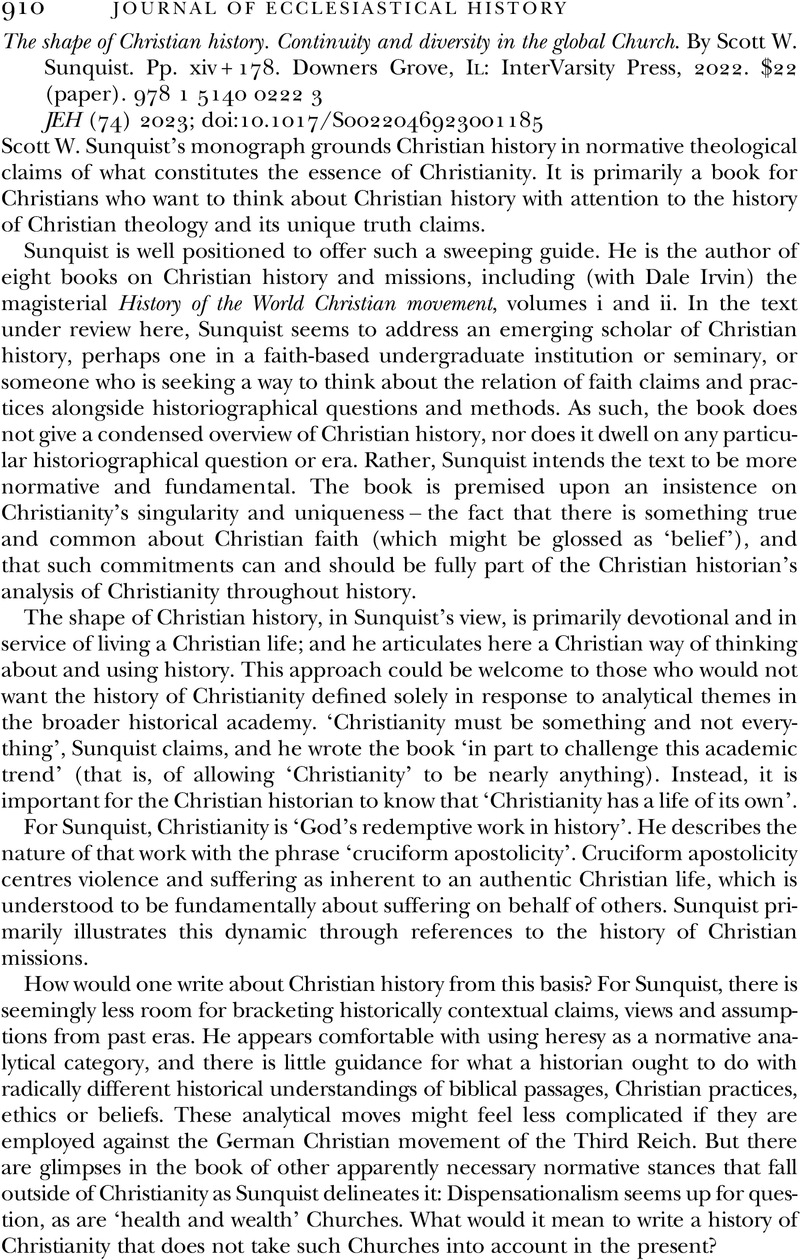No CrossRef data available.
Article contents
The shape of Christian history. Continuity and diversity in the global Church. By Scott W. Sunquist. Pp. xiv + 178. Downers Grove, Il: InterVarsity Press, 2022. $22 (paper). 978 1 5140 0222 3
Review products
The shape of Christian history. Continuity and diversity in the global Church. By Scott W. Sunquist. Pp. xiv + 178. Downers Grove, Il: InterVarsity Press, 2022. $22 (paper). 978 1 5140 0222 3
Published online by Cambridge University Press: 04 October 2023
Abstract
An abstract is not available for this content so a preview has been provided. Please use the Get access link above for information on how to access this content.

- Type
- Reviews
- Information
- Copyright
- Copyright © Cambridge University Press 2023



